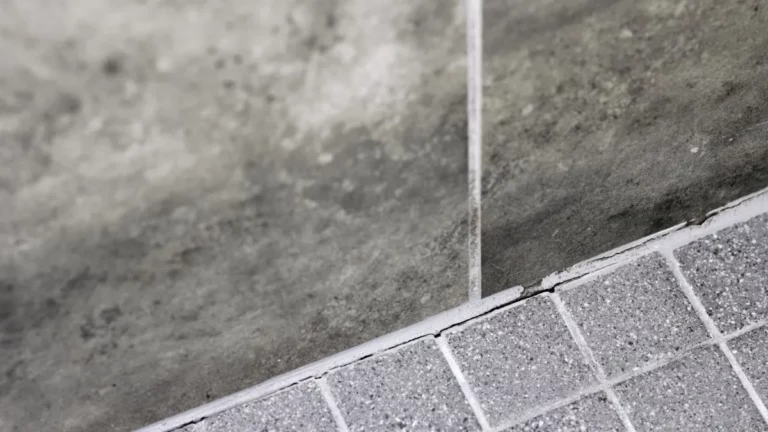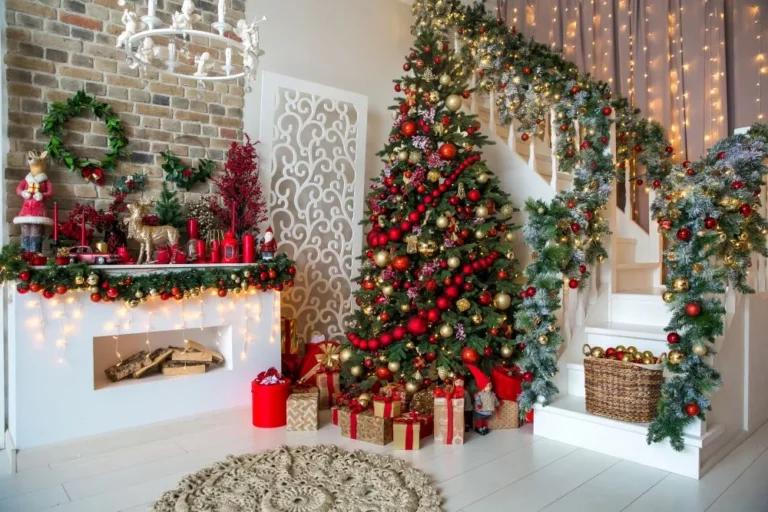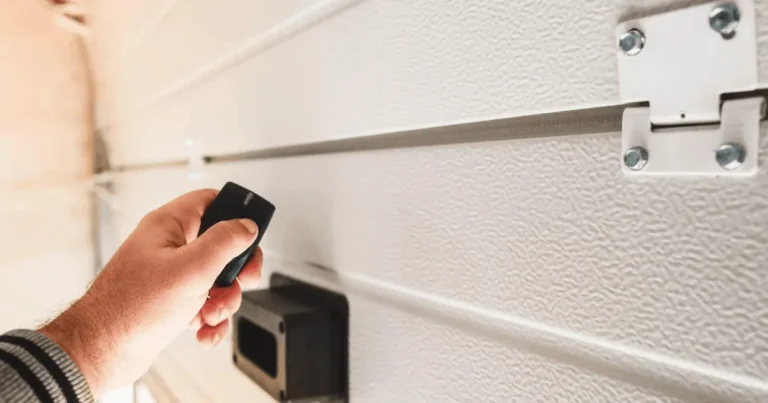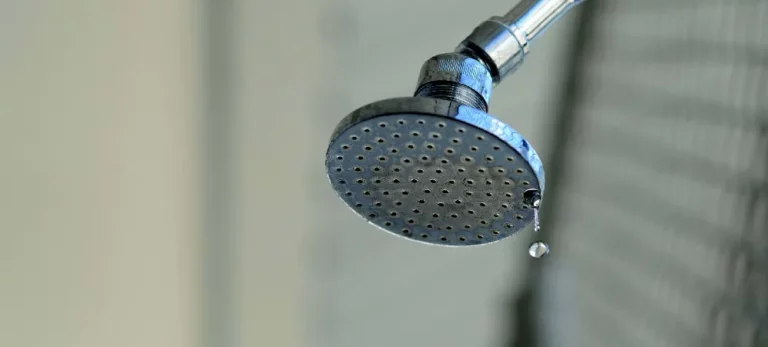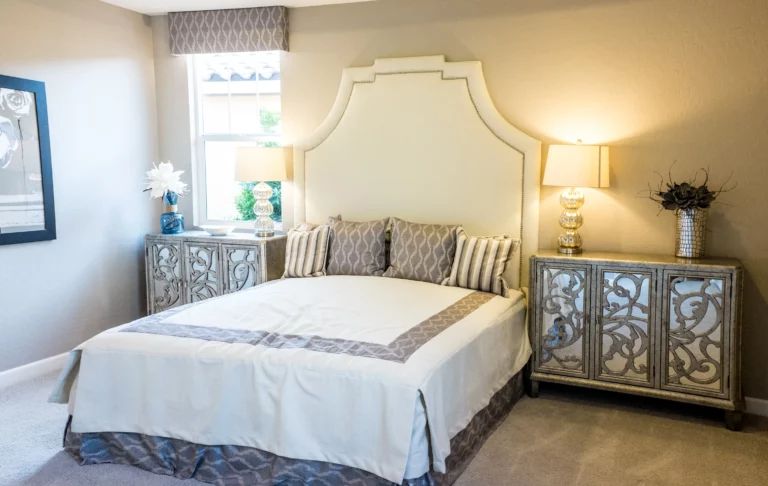Why Older Houses Are Built Better
When it comes to buying a home, there’s something undeniably appealing about the charm and character of older houses. From their unique architectural details to their larger lot sizes, these homes have an undeniable allure that many modern builds can’t replicate. But it’s not just aesthetics that make older houses stand out; they were also built with a level of craftsmanship and durability that is often lacking in newer constructions. We’ll explore why older houses are built better and why you should consider them when searching for your dream home. So let’s dive in and discover the timeless beauty and quality of older homes!
Understanding Why Older Houses Are Built Better”:

Why do older houses have a reputation for being built better than their modern counterparts? We’ll uncover the reasons why understanding the construction quality of older homes is essential when it comes to making an informed decision about your next property purchase. From cost considerations to examining craftsmanship and materials, as well as exploring location advantages and unique features, we’ll showcase the numerous benefits that come with choosing an older house. So, let’s embark on a journey through time and discover what makes these homes so special!
Introduction
When it comes to buying a house, many people are drawn to the shiny new builds that promise modern amenities and sleek designs. But what if I told you that older houses actually have a lot more to offer? That’s right—older houses are built better! In this blog post, we’ll delve into the reasons why purchasing an older home might be the best decision you ever make.
There’s something special about stepping into an older home. The creaky wooden floors, the intricate details in the molding, and the history that seeps through every crack in the wall—all of these elements come together to create a sense of charm and character that is hard to replicate in newer constructions. But beyond their aesthetic appeal, understanding how these homes were constructed can shed light on their superior quality compared to their modern counterparts. So, let’s take a closer look at why older houses are truly built better!
Explanation of the topic
Older houses have a certain allure that modern homes often lack. They possess a sense of history and charm that can’t be replicated. But what exactly makes older houses better built?
It’s important to understand the construction quality of older houses. Many were built by skilled craftsmen who took pride in their workmanship. These builders used solid materials and paid attention to even the smallest details. This dedication resulted in homes that were not only sturdy but also aesthetically pleasing.
Additionally, understanding the construction quality of older houses is vital because it allows homeowners to make informed decisions when purchasing a property. By knowing what to look for, buyers can assess whether an older home has been well-maintained or if any renovations are necessary.
Comprehending why older houses are built better provides valuable insight into their durability and craftsmanship. It helps us appreciate the unique qualities they possess and encourages us to consider these timeless gems when searching for our dream home!
The importance of understanding the construction quality of older houses
Understanding the construction quality of older houses is crucial when considering purchasing a home. While many modern homes may have sleek designs and trendy features, there is something to be said about the craftsmanship and durability of older homes.
In an era where mass production and cost-cutting are prevalent, older houses stand as a testament to the meticulous attention to detail that was once prioritized. The materials used in their construction were often sourced locally, ensuring superior quality and longevity. By understanding this aspect of older houses, potential homeowners can make informed decisions about their investments.
Cost
The comparison of prices between old and new homes can be a major deciding factor for potential buyers. Old homes typically come at a lower cost compared to newer constructions. This is because older houses have already been through years, if not decades, of depreciation. On the other hand, brand-new homes are often priced higher due to factors such as inflation and increased construction costs.
The benefits of purchasing an older home at a lower cost are significant. Buyers can save money upfront on the purchase price, allowing them more room in their budget for renovations or personalization. Additionally, lower mortgage payments may result from purchasing an older home with a smaller loan amount. With careful planning and smart investments in updates and repairs, buyers can create their ideal living space while still saving money overall.
Comparison of prices between old and new homes
When it comes to purchasing a home, one of the most important factors for many buyers is the cost. And this is where older houses often have an advantage over new homes. In general, older homes tend to be more affordable compared to their newer counterparts.
This price difference can be significant and can have a big impact on your budget. Older homes are often priced lower due to factors such as depreciation and market demand. So, if you’re looking for a more budget-friendly option, an older house might be the perfect choice for you!
Benefits of purchasing an older home at a lower cost
When it comes to buying a home, cost is often a major factor for many individuals and families. One of the significant benefits of purchasing an older home is that it is typically available at a lower cost compared to newer properties. This can be particularly appealing for first-time buyers or those looking to get more bang for their buck.
Buying an older home at a lower cost means you can potentially save money upfront on your purchase. With the price difference between new and old homes, you may also have more flexibility in terms of your budget, allowing you to allocate funds towards renovations or personalizing the space according to your preferences.
Additionally, older homes often come with larger lots or more land compared to newer developments. This provides homeowners with added outdoor space where they can create gardens and play areas for kids or even build additions like patios or decks. The extra room allows for greater possibilities when it comes to outdoor living and entertaining.
Purchasing an older home at a lower cost not only saves money initially but also offers the opportunity for customization and additional outdoor space. It’s worth considering if you’re looking for affordability without sacrificing potential improvements and lifestyle enhancements!
Construction Quality
Examining the craftsmanship and materials used in older houses reveals an unmatched construction quality. The attention to detail and dedication to solid construction methods are evident in every aspect of these homes. From the foundation to the roof, older houses were built with durability and longevity in mind.
The construction methods used in older homes contribute significantly to their superior quality. Skilled craftsmen employed techniques that have stood the test of time, resulting in structures that have weathered decades or even centuries without losing their charm. Solid wood beams, hand-cut nails, and intricate masonry work are just a few examples of the exceptional craftsmanship found in older houses. These elements not only add character but also ensure structural integrity for generations to come.
Examining the craftsmanship and materials used in older houses
Examining the craftsmanship and materials used in older houses is like embarking on a journey through time. Each detail, from the ornate woodwork to the intricately designed tile floors, tells the story of skilled artisans who took pride in their work. The quality of materials used, such as solid hardwoods and sturdy brick walls, adds to the durability and longevity of these homes.
In older houses, it’s not uncommon to find hand-carved wooden banisters or original stained glass windows that have stood the test of time. These elements showcase the attention to detail and artistry that went into constructing these homes. The use of high-quality materials ensures that even after decades or centuries, these features retain their beauty and functionality. It’s no wonder why many homeowners appreciate and seek out older houses for their superior construction standards.
How do the construction methods of older homes contribute to their durability?
Examining the construction methods of older homes reveals a level of craftsmanship that contributes to their remarkable durability. Unlike modern construction practices that often prioritize speed and cost-efficiency, older houses were built with meticulous attention to detail and quality materials. The use of solid wood beams, sturdy foundations, and handcrafted finishes all contribute to the long-lasting nature of these homes.
In addition, the construction techniques employed in older houses allow them to withstand the test of time. For instance, traditional framing methods using mortise and tenon joints result in stronger connections between structural elements. This not only enhances stability but also reduces the risk of sagging or shifting over time. Furthermore, many older homes feature thick plaster walls, which provide insulation as well as soundproofing benefits. These factors combined make it clear why older houses are celebrated for their durability even after decades or centuries since they were built.
Examples of specific features that highlight the better construction quality of older houses
The construction quality of older houses is often superior to that of newer homes. One key aspect is the attention to detail and craftsmanship exhibited in their design. For example, intricate woodwork, such as hand-carved moldings and ornate trim, can be found throughout many older homes. These unique features not only add character but also showcase the skill and artistry of the builders.
Additionally, older houses often boast sturdy materials that withstand the test of time. Solid brick or stone exteriors provide a level of durability and insulation unmatched by modern building materials. Inside, solid hardwood floors are commonly found in older homes, showcasing their longevity and timeless appeal. From grand staircases to carefully crafted built-in shelving units, these specific features highlight the superior construction quality found in older houses.
Location
Exploring the advantages of older homes being in established areas goes beyond just convenience. These houses are often located in neighborhoods with mature trees, well-maintained streets, and a sense of history. The location itself adds value to the property, as it provides a sense of community and belonging that cannot be replicated in newer developments.
Furthermore, factors that make the location of older homes desirable include proximity to amenities such as schools, parks, shopping centers, and public transportation. Being situated in established areas means residents have access to all these conveniences without having to travel long distances. Additionally, older homes often boast larger lots or yards compared to newer developments, which can provide more outdoor space for gardening or entertaining friends and family. This combination of historical charm and practicality makes the location an important consideration when looking at purchasing an older home.
Exploring the advantages of older homes being in established areas
When considering purchasing a home, one major advantage of older houses is their location in established areas. These neighborhoods have stood the test of time and offer a range of benefits that newer developments may not provide.
Living in an established area means access to well-developed infrastructure and amenities. You’ll find mature trees lining the streets, sidewalks for leisurely strolls or jogging, and parks where families can gather. Additionally, schools are often within walking distance, making it convenient for families with children.
These neighborhoods usually boast a strong sense of community. Over the years, residents have built connections and formed lasting relationships with their neighbors. From annual block parties to neighborhood watch programs, there’s often a deep-rooted camaraderie that contributes to a safe and welcoming environment.
Choosing an older home in an established area offers more than just four walls; it provides an opportunity to be part of a vibrant community with a rich history and character. So, if you’re looking for charm combined with convenience, exploring these well-established neighborhoods could be your perfect fit!
Factors that make the location of older homes desirable
Exploring the advantages of older homes being in established areas is one of the key factors that make their location desirable. These neighborhoods often have mature trees, well-maintained streets, and a sense of history and character that newer developments may lack. Additionally, older homes are usually located near amenities such as schools, parks, shopping centers, and public transportation options.
Living in an established neighborhood offers a sense of community and stability. Residents have had time to form relationships with their neighbors and develop a strong support system. There is also less uncertainty about how the area will develop in the future since it has already proven itself over time. Plus, many older neighborhoods are conveniently situated closer to city centers or other points of interest, making commuting easier for residents. All these factors contribute to making the location of older homes highly desirable for those seeking a sense of connection and convenience in their daily lives.
Character and Charm
Discussing the unique characteristics and architectural details found in older houses is like stepping into a time capsule. These homes often boast intricate woodwork, stained glass windows, and ornate fireplaces that are works of art themselves. The craftsmanship involved in creating these features is truly remarkable. Each detail tells a story and adds to the overall charm of the house.
These distinctive features not only add aesthetic value but also create a sense of nostalgia. Walking through an older home can transport you back in time, evoking feelings of warmth and history. From quaint front porches to original hardwood floors, every nook and cranny has its own story to tell. Homeowners can embrace their uniqueness while residing in a home with character and timeless beauty.
Discussing the unique characteristics and architectural details found in older houses
Older houses have a charm and character that are hard to find in newer constructions. They boast unique architectural details that tell a story of the past. From intricate moldings and decorative woodwork to stained glass windows and original fireplaces, these features add personality and history to each home.
The craftsmanship found in older houses is truly remarkable. The attention to detail is evident in every nook and cranny, showcasing the skill of skilled artisans from generations ago. Ornate cornices, hand-carved fences, and grand staircases are just some examples of the exquisite craftsmanship that can be found in older homes. These details not only add aesthetic appeal but also contribute to the overall quality and durability of the house.
In addition to their architectural details, older houses often feature unique design elements such as high ceilings, large windows, or wrap-around porches. These distinctive features not only create a sense of elegance but also provide practical benefits like increased natural light or additional outdoor living space. Whether it’s an intricately designed front door or a charming bay window overlooking a garden, these architectural elements make older homes stand out from cookie-cutter modern designs.
How these distinctive features add value and appeal to older homes
Older homes have a certain charm that is hard to find in modern houses. These distinctive features not only add value to the property but also create a unique appeal that sets them apart from newer constructions.
One of the standout characteristics of older homes is their architectural details. From ornate woodwork and intricate moldings to stained glass windows and vintage fixtures, these elements exude craftsmanship and elegance. The attention to detail found in older homes adds character and authenticity, making them more than just four walls. Each nook and cranny tells a story, adding layers of history and personality to the overall ambiance.
In addition to architectural details, older homes often boast unique design features like bay windows, built-in bookcases, and cozy fireplaces. These elements not only enhance the visual aesthetics but also offer practical functionality. They provide additional storage space or serve as focal points for gathering areas such as living rooms or libraries. Such distinctive features are difficult (if not impossible) to replicate in new construction projects, giving old houses an edge when it comes to desirability and market appeal.
Lot Size
Comparing the larger lot sizes typically found with older homes can be a major selling point for many buyers. With more outdoor space, homeowners have the opportunity to create their own private oasis in the backyard. Whether it’s a sprawling garden, a pool and patio area, or simply room for kids and pets to play freely, having a larger lot provides endless possibilities.
In addition to enjoying more privacy and freedom on your property, having a bigger lot also means there is potential for expansion or future development. You may have the option to add on an extension to your home or even build an additional structure like a guest house or garage. This flexibility allows you to adapt your living space as your needs change over time. So, if you value outdoor living and room for growth, an older home with a generous lot size might be the perfect fit for you!
Comparing the larger lot sizes typically found with older homes
When it comes to the size of the lot, older houses have a distinct advantage. One of the main reasons why many people prefer older homes is because they often come with larger lots compared to newer properties. This means more outdoor space for you and your family to enjoy!
Having a larger lot can provide endless possibilities for creativity and customization. You can create your private oasis by adding a garden, patio, or even a pool. With ample room to roam around, children can play freely, and pets can run wild without feeling cramped.
In addition to the extra space, larger lots also offer more privacy from neighboring properties. You won’t have to worry about being too close or having limited outdoor boundaries. Plus, with bigger yards, you may also have room for additional amenities like sheds or garages.
The larger lot sizes typically found with older homes are definitely an appealing feature that sets them apart from their newer counterparts. So, if you’re someone who enjoys spending time outdoors and values having plenty of room to breathe in your backyard, considering an older home might be just what you need!
The benefits of having more outdoor space in an older home
When it comes to older homes, one of the major advantages is the larger lot sizes that often accompany them. This means you have more outdoor space to enjoy and make your own! Whether you have a green thumb and want to create a beautiful garden oasis or love having room for kids or pets to play freely, an older home with a bigger yard can provide endless possibilities.
Having more outdoor space also allows for increased privacy. With neighbors typically being farther away compared to newer subdivisions, you can enjoy your backyard without feeling like you’re constantly under scrutiny. Plus, having extra room outdoors gives you the opportunity to create different zones within your property—perhaps a patio area for entertaining guests or even adding in amenities such as a pool or hot tub. The possibilities are truly endless when it comes to maximizing the potential of your outdoor living space in an older home!
Conclusion
Recap of the reasons why older houses are built better
We have explored the many reasons why older houses are built better than their modern counterparts. We discussed how understanding the construction quality of older homes is important for homeowners and buyers alike. By considering cost, it becomes evident that purchasing an older home can be a more affordable option compared to newer constructions.
Furthermore, we examined the craftsmanship and materials used in older houses, highlighting their durability and superior construction methods. The unique character and charm found in these homes add value and appeal to potential buyers. Additionally, the larger lot sizes commonly associated with older homes provide ample outdoor space for relaxation or expansion.
When looking at factors such as location advantages and architectural details, it becomes clear that older houses offer numerous benefits over new builds. So if you’re in the market for a home that combines history with quality craftsmanship, consider exploring the world of older house options available to you!

